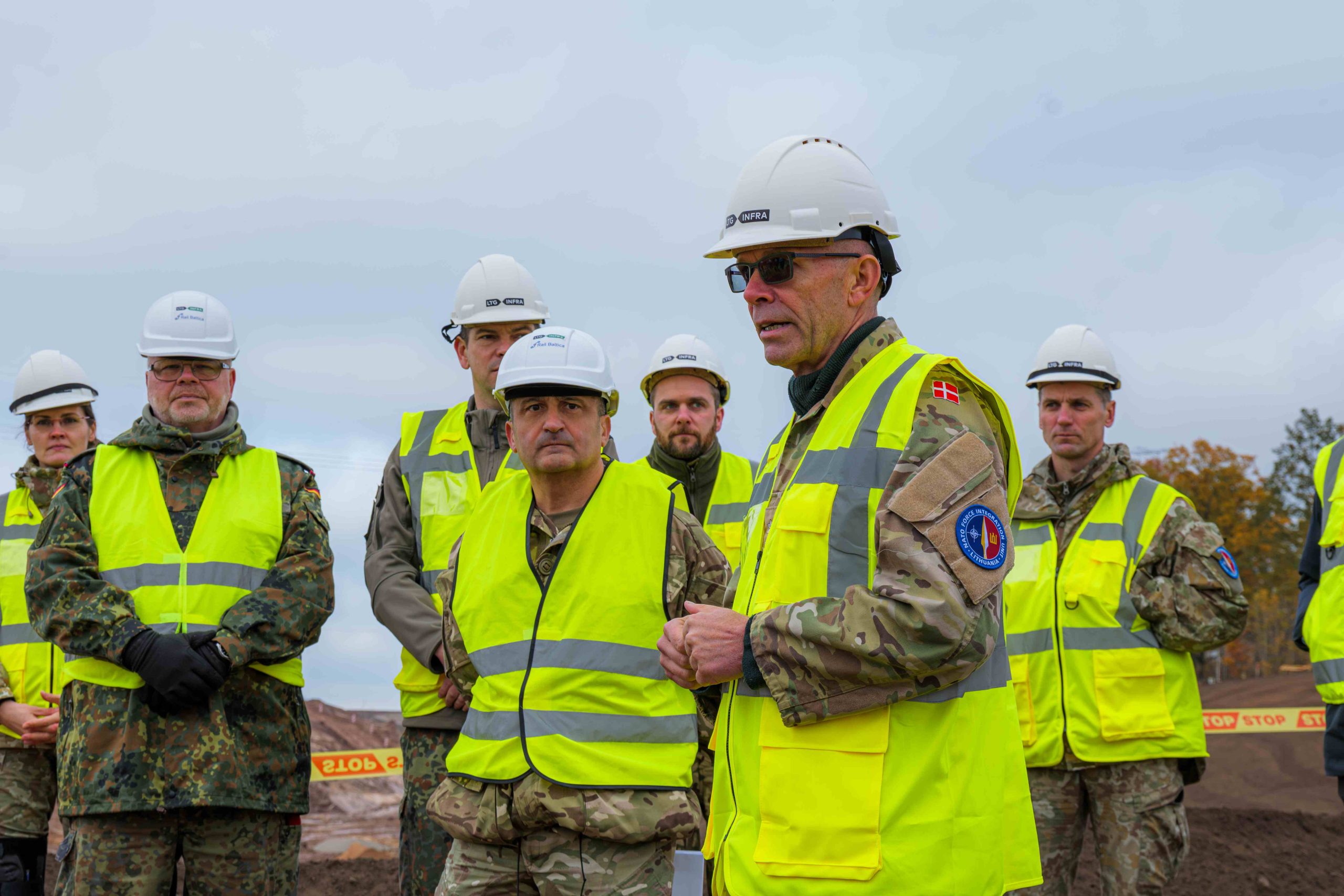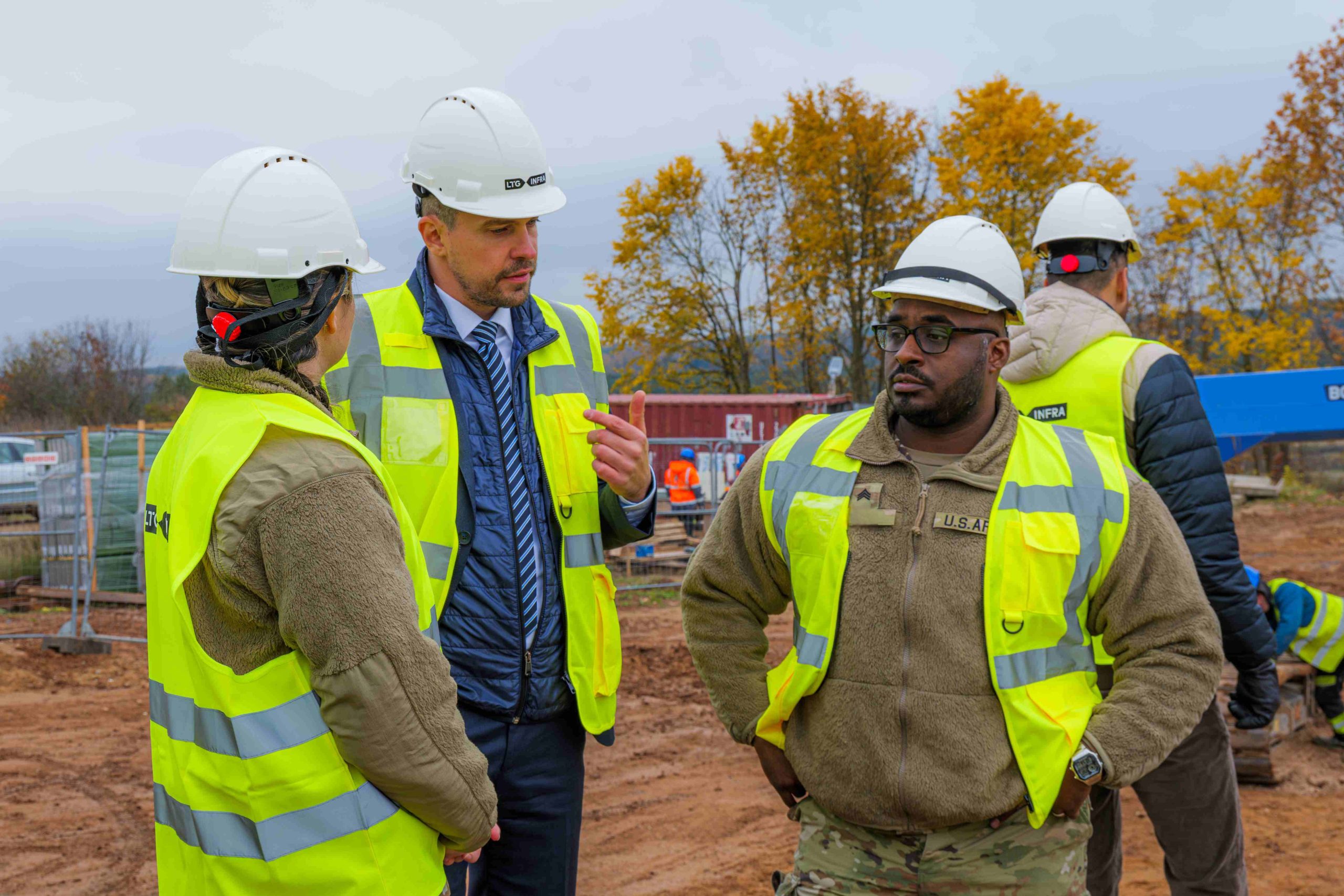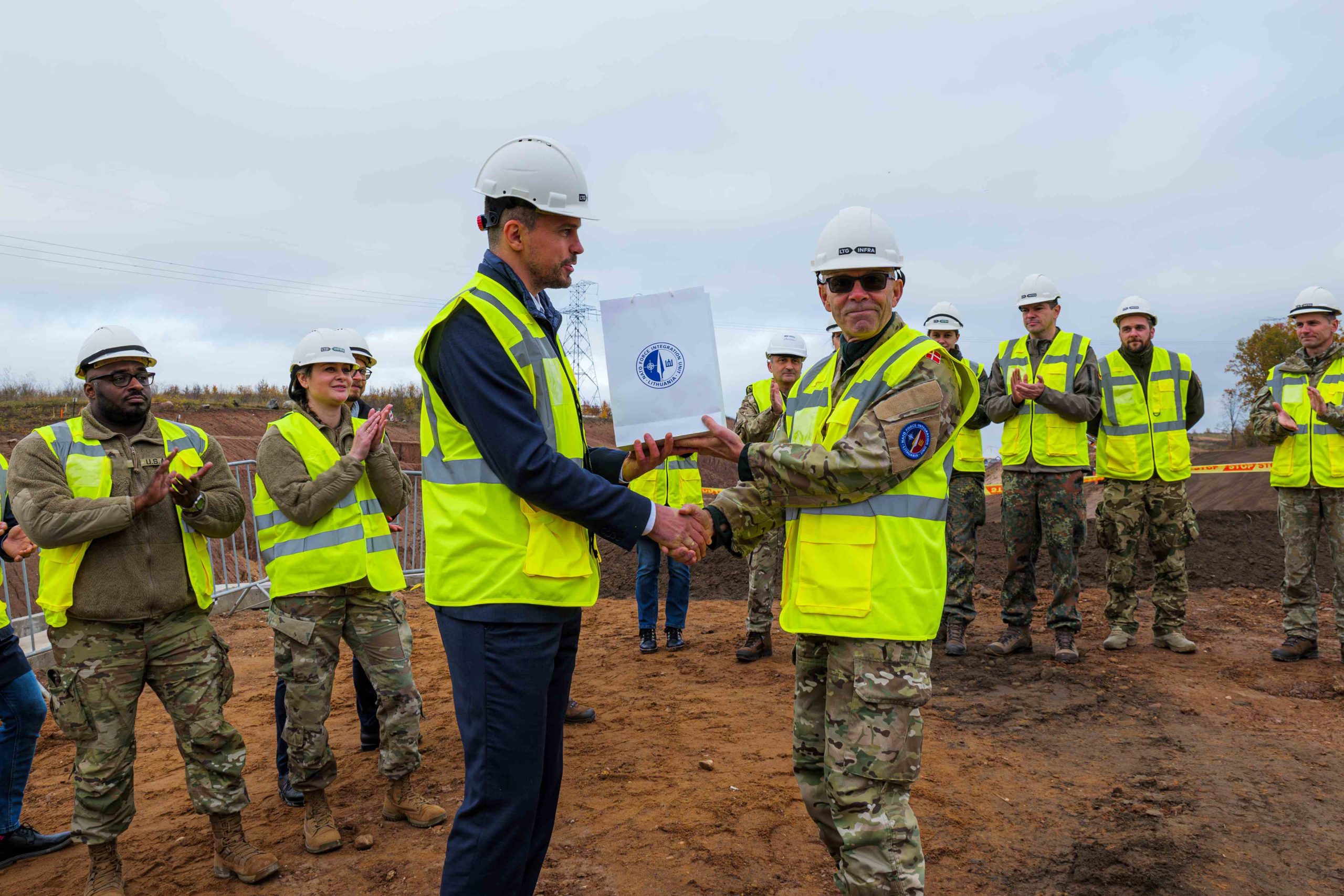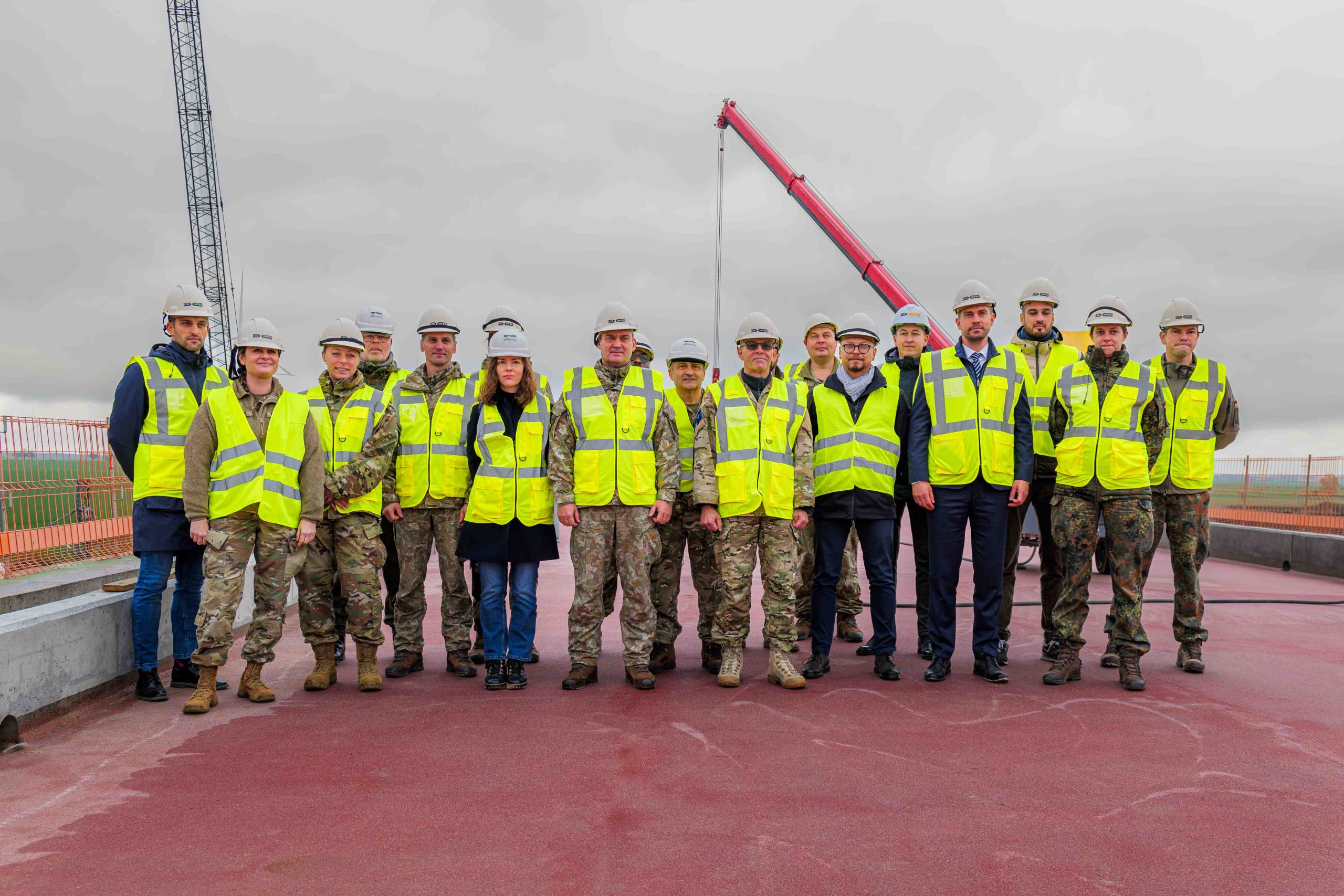The NATO Force Integration Unit (NFIU) visited the Rail Baltica construction site in Jonava district, where it observed the ongoing construction of the European rail track. NFIU Commander Colonel Peter Nielsen (Danish Armed Forces) noted that Rail Baltica is a civilian project with military implications that will significantly enhance NATO’s ability to deploy reinforcements quickly and efficiently in the Baltic region.
During the meeting, Justas Vyžintas, LTG Infra Head for Rail Baltica Management, presented the progress and future stages of the project, as well as other military mobility infrastructure projects in Lithuania, Gediminas Šečkus, Chief Resilience Officer of LTG Group, discussed the FREE Rail program, and LTG Cargo presented the latest information on rail freight transport. LTG Group and the NFIU have close working ties.
Almost 10 years in Lithuania
The NFIU is a force command and control headquarter whose primary task is to ensure the deployment of NATO’s forces and additional elements to the region, if required. Established in Lithuania in 2015, NFIU acts as an intermediary to ensure interoperability between national and allied forces deployed in the region.
“Rail Baltica is fundamental for faster military mobility and for the overall security of the region. We estimate that the number of NATO military trains arriving in Lithuania has increased every year since 2019, with a 40% increase in 2023. The need for the infrastructure is high and mutual,” said LTG Group CEO Egidijus Lazauskas.
“When faced with a military threat, Lithuania’s security directly depends on the speed of deployment of NATO allies. Therefore, it is essential to ensure that military mobility becomes one of the top national security priorities and that sufficient resources and efforts are devoted to it. It should be emphasized that military mobility serves primarily as a deterrent. However, the benefits derived from it – in the form of a well-developed national transport infrastructure – are for the benefit of society as a whole,” said Colonel Nielsen, who has been in charge of the unit since 2021.
Ensuring data security too
The LTG Group has initiated a strategic FREE Rail program to develop a model for broad gauge railways to fully integrate into the European rail system and thus strengthen their resilience against unfriendly countries.
“The FREE Rail program is aimed not only at infrastructure and train operations, but also at technological and informational European integration. By becoming an integral part of the European railway system, we are changing elements that have been historically inherited: standards, operational rules, IT systems and technologies,” said Šečkus, LTG Group’s CRO.
Rail Baltica will open the opportunity to further expand LTG Cargo’s project transport volumes, which have been growing in recent years, including military transports. Rail Baltica’s reliable and maintained infrastructure will allow not only more but also a wider variety of freight to be transported, thus increasing the value of European rail for various industries.
Broad infrastructure development
The 1435 mm Rail Baltica line will be added to the 1520 mm services the development of which started in Lithuania before the outbreak of the war in Ukraine.
In Kaunas (Palemonas), a dual-purpose 1520 mm and 1435 mm track loading infrastructure is being designed and implemented to accommodate NATO military cargo flows. Military equipment from Kaunas can be transported directly to the deployment site by road or can be reloaded and transported by broad gauge rail to other parts of Lithuania as well as to Latvia and Estonia. It will be the largest dual-purpose terminal in the Baltic States.
The development of infrastructure in Palemonas will also facilitate access to the Rūdininkai training ground, where a German brigade is planned to be deployed.
European-standard infrastructure is the missing link for the full integration of the Baltic States into the European Union (EU) rail transport network. Standardization of rail infrastructure will increase the EU’s ability to respond to security threats and strengthen vulnerable regions.




